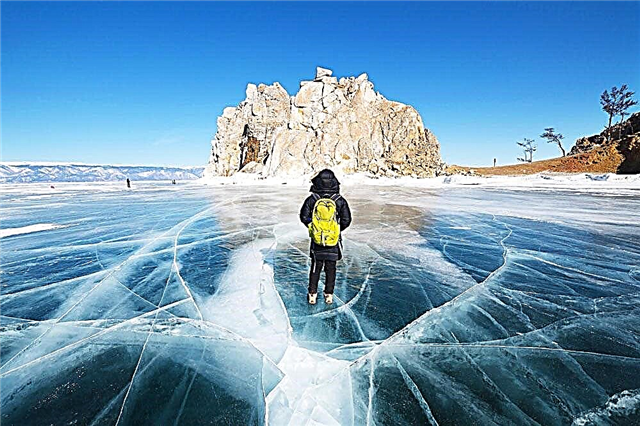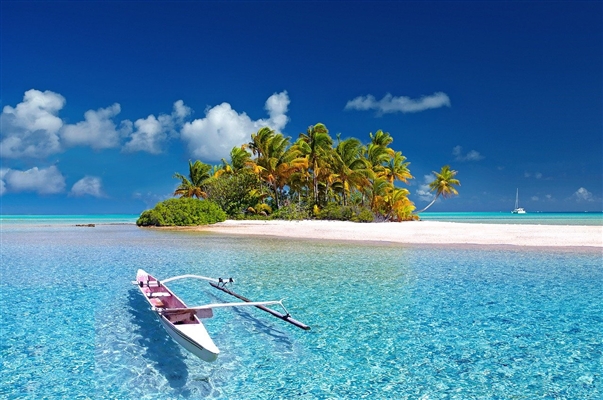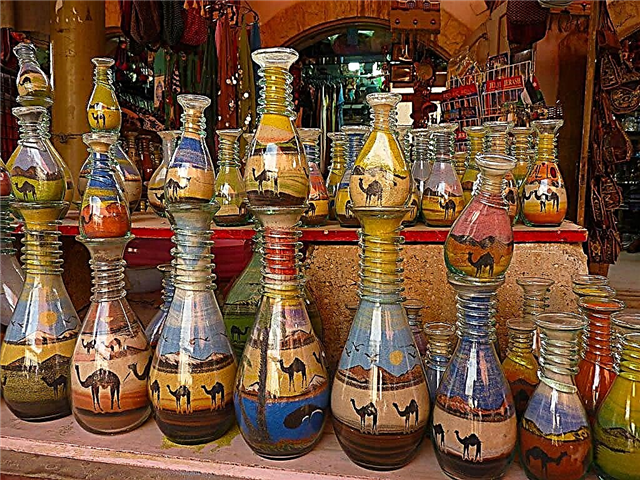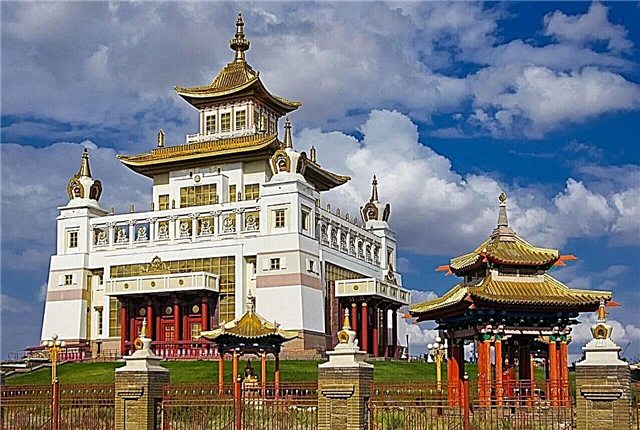Kalmykia is the only Buddhist republic located in the European part of Russia. Its culture and customs were influenced by neighboring states, but the Kalmyk people are in many ways original. In many ways, the sights of Kalmykia are associated with Buddhist traditions. The pagodas and stupas in Elista are a direct proof of this. Religious sites were often built with the direct participation of fellow believers from other countries, which gives them even more authenticity. Of some natural phenomena, the locals organized festivals. For example, the blooming of tulip fields has been turned into a multi-day holiday in April. The Kalmyks also take care of their own peculiarities: saigas, lotuses and other beauties.
The most interesting and beautiful places in Kalmykia
List, photos with names and descriptions of popular attractions!
Golden abode of Buddha Shakyamuni
The largest Buddhist temple in Kalmykia. Erected in Elista, consecrated in 2005. Inside there is a statue of Buddha 10 meters high. The entrances are located on all cardinal points. The monastery is surrounded by a fence, 108 white stupas are built into it. Also built around 17 pagodas, and in them - the statues of the great teachers of the Buddhist monastery of Nalanda. Main relics: Lama Tsongkhapa's hair, clothes of the XIV Dalai Lama.
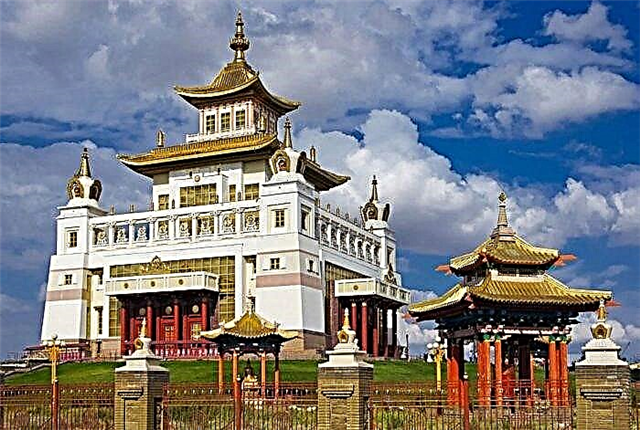
Golden Gate "Altn Bosch"
Located in the center of Elista. The height of the structure is 15 m. The arch has a golden color and stands on red columns. It was built in accordance with Buddhist traditions. The outer part is decorated with paintings by Nikolai Borisov. They depict important events from the history of Kalmykia. Newlyweds come here to take a photo. There is also a belief: the passage under the gate helps to cleanse spiritually.

City Chess
The construction of the complex with residential and office buildings was timed to coincide with the 1998 Chess Olympiad. Built near Elista. The area is more than 593 hectares. The most important building is the Chess Palace. Subsequently, the territory received a special status. Forums and other social and cultural events are held here. In 2001, the Museum of Chess Glory appeared here.

Reserve "Chernye Zemli"
Founded in 1990. Most of it belongs to the Caspian lowland. The area is almost 122 thousand hectares. The only place on the territory of Russia where three types of landscape are studied at once: steppe, desert and semi-desert. Divided into two clusters. In the first, the saiga population is restored, in the second, rare waterfowl and near-water birds are protected. It became a UNESCO Biosphere Reserve in 1993.

Kennel "Yashkulsky"
Located in the area of the same name. It is one of three saiga breeding centers in the world. They are kept both individually in small enclosures and in herds on a fenced area of about 62 hectares. In addition to this unique species of antelope, other animals live in the nursery, for example, sheep, horses, ostriches. Administrative buildings require renovation. There are camping sites nearby.

Manych-Gudilo
The lake belongs to 3 subjects of Russia at once: Kalmyki, Rostov region and Stavropol Territory. The name has two meanings. The first relates to salty waters, the second to winds, which are not uncommon here. The rumble arising from the air currents caused the appearance of legends. The area is 344 km². The average depth is just over half a meter. There are several islands, the largest are Water and Bird.

Blooming tulips
The flower festival, traditional for Kalmykia, takes place in April. Every year the date shifts slightly due to weather conditions and organizational issues. The event is taking place in the Verkhneyashkulskiy rural municipality in the tulip fields. The festival includes various competitions, including archery, folklore performances, horse and camel rides.

Lotus bloom
This splendor lasts a total of about a month from mid-July to mid-August. However, each individual bud only blooms for a couple of days. The main places where you can watch lotuses in Kalmykia are the Volga delta. Excursions from Elista and other cities are arranged here. You cannot pick flowers, moreover, they wither right before your eyes, if you break the ban.

Big Yashaltinskoe lake
It is located in the Yashalty region. The area is 40 km², the maximum depth is one and a half meters. The lake bowl is almost flat. Its main tourist value is its curative mud. In summer, the water warms up well enough, which gives additional opportunities for organizing recreational tourism here. However, the potential of the lake is still underutilized. There are several more reservoirs of the Manych lake group nearby.

Park "Friendship"
The most spacious recreation area in Elista. Founded in 1937. Area - 25 hectares. On its territory there are many sculptures referring to the culture and traditions of the Kalmyk people. For example, the monument to Jangarchi Eelian Ovla. There is also a natural monument - an oak grove, a spring "Bortha", as well as an arch of the Golden Gate "Altn Bosch". The park is constantly being updated to make the rest of the townspeople more comfortable.

Kazan Cathedral
Consecrated in 1997 by Patriarch Alexy II. Orthodox churches in Elista have a difficult history. Some were burnt, others were dismantled for building materials. Kazan Cathedral became a cathedral and attracted parishioners, despite its modest size. It is single-domed and crowned with a cross. A small bell tower is attached above the entrance. The main relic is an icon with a particle of the relics of St. Innocent.

Stupa of Enlightenment
Built in 1999 in Elista. The original name of the stupa is translated as "the performer of all prayers." The territory is crossed by 8 ropes with multi-colored prayer flags. There are several relics in the stupa. At the base is a prayer drum with 50 million mantras. Nearby is a pavilion with a statue of Mahakala Bernagchen. Nearby attractions: City Chess, Karma Kagyu, Nyingma Temple.

Pagoda of Seven Days
Built in Elista in 2005. The name refers to the 7 Buddhas who came to our world. A spire at the top of the pagoda symbolizes the attainment of nirvana. A prayer drum is installed at the base, inside of which 75 million mantras are laid. It was presented to Kalmykia by the lamas of the tantric monastery of India. In addition, the drum is inscribed with symbols and mantras in several languages.
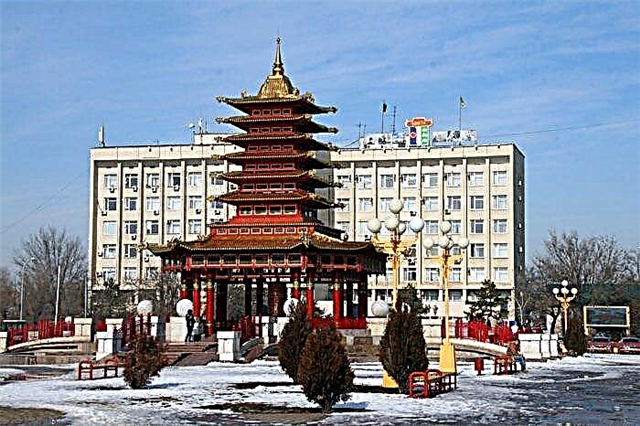
Syakusn-Syume
Founded in 1996. Built near the village of Arshan, a few kilometers from Elista. The consecration was personally conducted by the XIV Dalai Lama during his third visit to the republic. When designing the temple, the Tibetan style was chosen. Height - about 20 m. Prayer drums are installed near the entrance. They need to be rotated clockwise when entering and exiting the monastery. There are also 3 stupas and a lama's house on site.

Monument "Khongor - Scarlet Lion"
Installed in 1999 south of Elista, near the bypass road. The hero of the Kalmyk epic is located on a ten-meter-high quadrangular pedestal. In the hands of Hongor is a drawn bow with several arrows at once. This symbolizes the strength of a hero, the ability to cope with a superior number of opponents. The color is chosen to match the appearance of hot steel to convey the tension of the moment.

National Museum of Kalmykia
Founded in Elista in 1921. The only museum in the country where the history of the Kalmyk people is fully covered. The collection is based on archaeological finds and ethnographic materials. The exposition includes samples of Old Kalmyk art, objects used for Buddhist rituals, sculptures of different years, modern national painting.

Monument to Ostap Bender
Installed in 1999 in Elista.It is connected with the previous year's Chess Olympiad. The sculpture is cast in bronze. There are 12 chairs around the site, in front of each table. You can, if you wish, conduct a session of simultaneous play with 12 opponents at once. The choice of the place for the statue of Ostap is not accidental, here at the age of 15 Kirsan Ilyumzhinov headed the Kalmyk chess team.
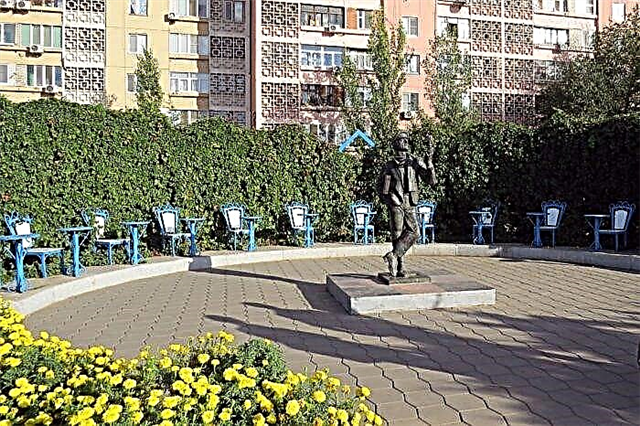
Drama Theater named after B. Basangov
Opened in 1936 in Elista. During the Second World War, many artists were drafted to the front or worked in the rear. The deportation could not but affect the troupe. The city began to delight spectators with performances again in 1959. At present, along with the classics, the theater staged plays based on the works of Kalmyk authors. The theater hosts other groups on its stage and tours extensively.

Museum of Oirat-Mongolian Nomad Culture
Elista's first interactive museum. It is located in a yurt and offers its guests a wide program. In addition to the traditional story about the peoples of the region, the history of nomads and their traditions, you can join the culture of the Oirat Mongols. For example, try on their outfits, shoot a bow, play games of that time. The exposition includes musical instruments, household items and even a live wolf.

Tsagan Aman khurul
Originally, a Buddhist temple in the village of the same name appeared in 1798 and was the first of its kind in the Kalmyk steppe. However, after the revolution, the khurul was destroyed. In the early 90s of the last century, it was decided to restore the temple near the house where Lama Tugmyud-gavji lived. Inside, a 2-meter statue of Buddha Shakyamuni was installed, as well as sculptures by Nepalese masters. Nearby there is a pagoda with a golden roof.

Lake Tsagan-Nur
It is located in the north of the republic and is part of the Sarpinsky lakes system. The name translates as "descended". This could be a reference to the fact that the lake has a negative altitude relative to sea level. The second option is "white lake", at the bottom when drying out, salt crystals are clearly visible. The area is 23.5 km². The average depth is about a meter. The water is unsuitable for economic activities.

Monument "Golden Horseman"
Opened in Elista in 2007. Dedicated to the national epic "Dzhangar". On a wide stele, 15 m high, the monument itself is installed - a hero galloping on a horse with a banner and a bow in his hands. The monument is covered with gold leaf and symbolizes the valor and courage of the Kalmyk people. An eagle flies to the left of the rider. Together they protect the city from adversity, patrolling the sky over the capital of Kalmyk.

Temple of the Great Victory
Built in the village of Bolshoi Tsaryn in the early years of the XXI century. Different craftsmen worked on the creation of the interior and exterior decoration. The height of the khurul is 18 m. The central part and the largest area is occupied by a prayer hall. There are rooms for monks and a study for a lama. Relics: statues of Buddha Shakyamuni and Buddha of Medicine, Ganjur donated by the XIV Dalai Lama, a collection of Buddhist thangkas and sacred texts.

Lonely poplar with a cascade of springs
The natural monument was entered in the registers in 1981. The poplar itself was planted by a Buddhist monk in 1846. The height of the tree is 15 m, diameter - 1.5 m. On the plot of land around the poplar there are outcrops of mineral and fresh springs with medicinal properties. The area is significant for the followers of Buddhism. In 2013, a sanctuary was built here, a stupa and 8 stone white pedestals were built.

Memorial complex "Exodus and Return"
Installed in Elista in 1996. Author - Ernst Unknown. Opened as a reminder of the events of 1943, when many Kalmyks were deported to Siberia. Memorial events are held annually near the monument on December 28. The ascent to the complex is arranged in such a way as to repeat the Buddhist rite of walking around the temple. The composition consists of the monument itself, a railway carriage and a plaque.



